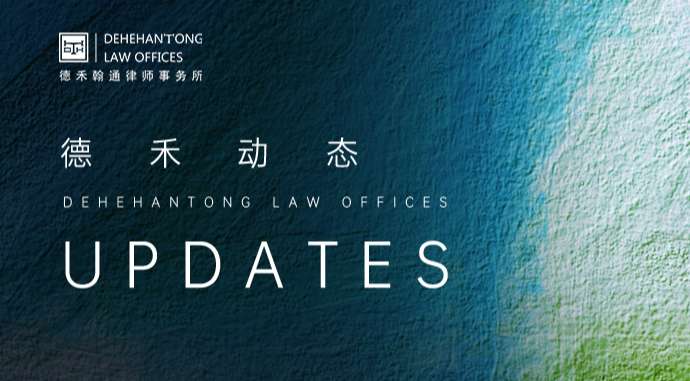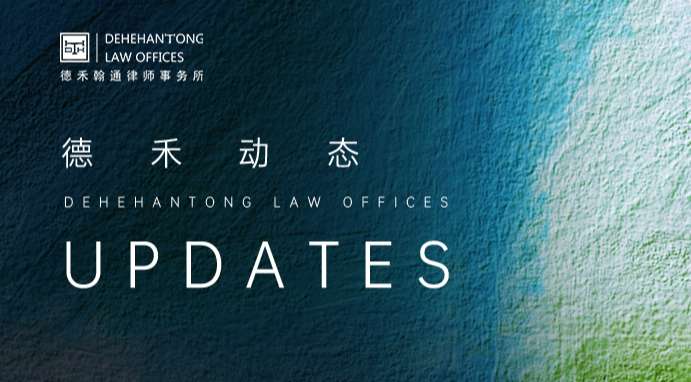"Construction Engineering Compliance Manual" - Quality Part (Part 2)
This paper focuses on engineering acceptance, warranty and construction change, and puts forward relevant compliance suggestions. Detailed project completion acceptance procedures, such as after the completion of the project, the construction unit to submit the project completion report to the construction unit to apply for project completion acceptance; The necessary conditions for the acceptance of the project, such as the completion of the design and the contents stipulated in the contract. A comprehensive interpretation of the concept of warranty and common legal risk manifestations. The concept of construction change, its influence on project quality and countermeasures are analyzed.
Ⅰ.test for uniform convergence
1. After the completion of the project, the construction unit shall submit the project completion report to the construction unit and apply for the project completion acceptance. For projects subject to supervision, the project completion report must be signed by the chief supervision engineer. (Before the completion of the project, the construction unit shall notify the quality supervision department to carry out quality supervision and inspection of the project entity in place);
2. After receiving the completion report of the project, the construction unit shall organize the investigation, design, construction, supervision and other units and experts from other relevant parties to form an acceptance group for the project that meets the requirements for completion acceptance, and formulate the acceptance plan;
3. The construction unit shall, 7 working days prior to the completion and acceptance of the project, notify the project supervision institution responsible for supervising the project of the time and place of acceptance inspection and the list of acceptance groups;
4.The construction unit shall organize the acceptance of the project completion: ① The construction, design, construction and supervision units shall report the performance of the project contract and the implementation of laws, regulations and mandatory standards for project construction in each link of the project construction; ② Review the project archives provided by the construction, design, construction and supervision units; ③ Check the quality of the project entity;④ Make an overall evaluation of engineering construction, equipment installation quality and various management links, form acceptance opinions on project completion, and sign the acceptance personnel. If the parties involved in the construction, design, construction and supervision of the project completion acceptance cannot reach a consensus, they shall report to the local construction administrative department or supervisory authority for coordination, and re-organize the project completion acceptance after reaching a consensus.
Ⅱ.Necessary conditions for project completion and acceptance
All contents stipulated in the design and contract have been completed;
1. The division (sub-division) projects included in the unit project are accepted and qualified, in line with laws, regulations, mandatory standards for engineering construction, provisions of design documents and contract requirements;
2. Engineering data meet the requirements;
3. Complete testing data on safety and function of division projects included in unit projects; The test results of the main functional items conform to the relevant professional quality acceptance specifications;
4. The perception quality of the unit project meets the requirements;
5. All the special acceptance and related professional system acceptance passed.
The construction unit is responsible for applying to the relevant government administrative departments or authorized testing institutions for professional and system acceptance: ① fire acceptance documents ② planning acceptance documents ③ elevator acceptance documents ④ intelligent building acceptance documents ⑤ construction project completion files pre-acceptance opinions ⑥ construction project indoor environment test report.
(3) The completion of the project acceptance record
The construction unit shall, within 15 working days after the completion acceptance of the project and after the supervision and inspection of the project quality supervision institution meets the requirements, go to the filing organ for the completion acceptance of the project for the record, and the construction unit shall provide the following documents for the completion of the project for the record: ① Completion acceptance filing form; ② Project completion acceptance report; ③ Construction permit; ④ Review opinions of construction drawing design documents; ⑤ Project completion report submitted by the construction unit; ⑥ Project quality assessment report submitted by the supervision unit; Approval documents or permission to use documents issued by planning, public security fire protection, environmental protection and other departments; ⑨ Acceptance opinions on project completion signed by the acceptance team; ⑩ The project quality guarantee signed by the construction unit; ⑪ Summary of project quality acceptance of the unit. The residential property shall also submit the Residential Quality Guarantee and the Residential Instruction Manual. Other documents required by laws, rules and regulations.
(4) Concept and compliance objectives
Acceptance is the procedure after the completion of construction renovation, through inspection and testing to ensure that the project meets the design requirements and specifications for transfer to use or delivery to the owner. The acceptance of the project shall be carried out in strict accordance with the acceptance standards and procedures to ensure that the quality of the project meets the acceptance requirements, and relevant acceptance records and reports shall be made to ensure the reliability and compliance of the project quality.
(5) Common legal risks
The contractor fails to apply for acceptance inspection in time;
Failure to provide complete acceptance data;
The Employer is negligent in acceptance;
Legal risks of unqualified acceptance and failure to timely cooperate with rectification.
(6) Adverse consequences
Adverse consequences: ①Because the contractor has not initiated the acceptance procedure, the risks of loss and damage before the project fails to pass the acceptance exist in the contractor, and if quality and safety problems are found during the subsequent acceptance of the project, the contractor shall be liable for compensation;②Affect the payment of progress payments or project payments, and generally, the contractor's right to claim payment of the final payment is limited if the project has not passed the acceptance inspection;③If the construction period is delayed due to the failure to apply for acceptance in time, the contractor may bear the civil liability for the delay.
2. Legal risk of not providing complete acceptance information
Adverse consequences:
First of all, for a project with missing acceptance data, if the project quality problems are still found in the acceptance procedure, it is very easy to pass the buck and cannot confirm the attribution of responsibility. At this time, due to the lack of acceptance data provided by the contractor, it is the contractor's fault, and usually the contractor will bear most of the civil liability. Secondly, according to relevant regulations, if the construction unit does not provide complete acceptance data, resulting in quality problems of the construction project, it will face administrative responsibility. Specifically, violations of regulations include failure to submit the completion acceptance report, relevant approval documents or permission to use documents for the record in accordance with state regulations, which will be ordered to correct the penalty, with a fine between 200,000 yuan and 500,000 yuan.
3. Legal risk of the employer's negligence in acceptance
Adverse consequences:
(1) The Contractor may claim that: If the contractor has sent the Completion Acceptance Application Report, but the contracting party still does not make any response, at this time, if the employer refuses to pay the project money to the contractor on the grounds that the completion date cannot be confirmed because it has not passed the acceptance inspection, the contractor may, in accordance with the Interpretation of the Supreme People's Court on Legal Issues Applicable to the Trial of Disputes concerning Construction Contracts (I), item 2 of Article 9: "If the contractor has submitted the completion acceptance report and the Employer delays the acceptance check, the date on which the contractor submits the acceptance report shall be the completion date." Require the employer to pay the corresponding project funds.
(2) Project risk transfer, that is, on the presumed completion date transferred to the Owner, the Owner will also bear all subsequent accidental damage, loss of the relevant consequences.
(3) In the face of the risk of paying the corresponding liquidated damages, the employer's negligence in acceptance inspection or delay in acceptance inspection provides the basis for the contractor to investigate the employer's liability for breach of contract for negligence in acceptance inspection, which may be adjusted according to the liquidated damages agreed in the contract, even if the specific calculation method is not agreed. The contractor can also claim default interest on overdue payments to the employer in accordance with the benchmark interest rate for similar loans issued by the People's Bank of China for the same period.
4. Legal risks of unqualified acceptance and failure to timely cooperate with rectification
adverse consequence:
According to the provisions of Article 13.2.2 of the General Terms of the Model Construction Contract, in the course of completion acceptance, if the acceptance fails, the supervisor shall issue instructions according to the acceptance opinions, requiring the contractor to rework, repair or take other remedial measures for the unqualified works, and the increased costs and/or delay of the construction period shall be borne by the contractor. After the Contractor has completed the rework, repair or other remedial measures of the nonconforming Works, the Contractor shall submit a new completion acceptance application report and carry out a new acceptance according to the procedures agreed in this paragraph.
(7) Compliance suggestions
In order to reduce the legal risks of the acceptance process, the following measures are recommended:
1.Timely application for acceptance:
(1) The construction unit and the contractor shall apply for acceptance in time after the completion of the project decoration, and carry out the acceptance procedure in accordance with relevant laws and regulations and the contract.
(2) The construction unit shall supervise the progress of the contractor in fulfilling the acceptance obligations, and ensure that the acceptance is carried out on time to avoid legal risks caused by delay.
2. Complete completion and acceptance data:
(1) The contractor shall, as required, provide complete completion acceptance data, including design documents, as-built drawings, test reports, quality certificates, etc.
(2) The construction unit shall carefully review the data provided to ensure the completeness and accuracy of the data.
3. Rectification cooperation in case of unqualified acceptance:
(1) Upon acceptance of the acceptance opinion, the Contractor shall take immediate action to rectify, rework or take other remedial measures as directed by the Supervisor.
(2) The construction unit shall supervise the contractor's rectification process and ensure the effectiveness and compliance of the rectification measures.
(3) After the completion of the rectification, the contractor shall submit the application report for completion acceptance again and carry out the acceptance again in accordance with the prescribed procedures.
4. Make acceptance records and reports:
(1) In the process of acceptance, the construction unit and the contractor shall record the acceptance process, results and relevant rectification measures in detail.
(2) Acceptance records and reports shall be accurate and complete, including acceptance opinions, rectification, acceptance conclusions and other information, and be signed and confirmed by the relevant responsible party.
5. Comply with regulations and contracts:
The construction unit and contractor shall abide by relevant laws and regulations and contract agreements, and ensure that relevant provisions are not violated during the acceptance process to reduce the occurrence of legal risks.
Ⅱ.Warranty
(I) Concept and compliance objectives
Warranty refers to the contractor or decoration company to undertake the responsibility of repairing and maintaining the quality of the project within a certain period after the completion of the project. During the warranty period, if the project quality problems or hidden dangers are found, the owner can put forward repair or claim to the contractor. According to relevant regulations, the minimum warranty period of construction projects varies according to different types of projects. The minimum warranty period for infrastructure projects, foundation works of building construction and main structure projects shall be the reasonable service life of the project as stipulated in the design documents. The minimum warranty period for roof waterproofing, waterproofing of toilets, rooms and exterior walls is 5 years. The minimum warranty period for heating and cooling systems is 2 heating or cooling periods. The minimum warranty period for electrical piping, water supply and drainage pipes, equipment installation and renovation works is 2 years. The warranty period of other items shall be stipulated in the contract between the Employer and the contractor. The warranty period of the construction project shall be calculated from the date of completion acceptance.
(2) Common forms of legal risk expression
1. Failure to provide repair and maintenance services within the warranty period as agreed in the contract;
2. Quality problems occur during the warranty period, and the contractor fails to take remedial measures in time;
3. The scope and period of warranty liability are not clearly agreed or there are vague terms.
(3) Adverse consequences
Failure to fulfill the warranty responsibility as agreed in the contract may lead to project quality problems and safety risks, and face civil liability and administrative punishment.
According to the relevant laws and regulations of the Ministry of Housing and Urban-Rural Development, if the quality problem occurs within the warranty scope and warranty period of the project, the construction unit has the responsibility to fulfill the warranty obligation and bear the compensation responsibility for the loss caused thereby.
(4) Reference cases
A carpet limited liability company (hereinafter referred to as the "carpet company") issued a notice of acceptance to a construction and installation Engineering Company Limited (hereinafter referred to as the "construction company"), identifying the construction company as the successful bidder of the public rental housing construction project of the carpet company, but the two parties did not sign the construction contract. The public rental housing project constructed by the construction company has passed the acceptance of both sides. In the construction process, the construction company also according to the requirements of the carpet company, the carpet company's workshop and boiler room, fire pool and other projects were constructed, and no written construction contract was signed. However, both parties confirm that the plant and outdoor roads and other works have been completed and handed over in writing for use. After the quality compensation, the carpet company to the court, that part of the project involved in the construction quality does not meet the standards, the construction company should compensate for its losses, the specific amount to the quality appraisal conclusion shall prevail, the people's court should start the quality appraisal to determine the amount of compensation. The construction company believes that the matter involved in the application for quality appraisal of the carpet company is not the quality of the foundation and the main structure, in accordance with the relevant laws and regulations of the state, only the further maintenance of the quality defects after the acceptance of the project, but the carpet company did not inform its maintenance, and now claims that the quality compensation lacks the factual basis. The court held that: During the warranty period, the construction company shall fulfill the warranty obligations of the public rental housing that has passed the completion inspection and acceptance and has been delivered to the carpet company, as well as the workshop that has not passed the completion inspection and acceptance but has been delivered to the carpet company, and the costs incurred shall be borne by the construction company.
(5) Compliance suggestions
1. In order to reduce the legal risk of the warranty period, it is recommended to take the following measures:
2. Clearly stipulate the starting and ending time of the warranty period and the scope of warranty liability in the contract;
3. Determine the maintenance requirements and procedures during the warranty period, including the process of owner notification, contractor response and treatment;
4. Clearly define the scope and duration of warranty liability, including the treatment of different types of problems and defects;
5. Require the contractor to provide a written warranty commitment, and specify the warranty period and scope of responsibility;
6. Timely follow up and deal with the maintenance requirements put forward by the owner during the warranty period to ensure that the maintenance and treatment are carried out in accordance with the agreement and compliance requirements;
7. Conduct final acceptance before the end of the warranty period to ensure that all problems and defects are properly resolved; 7. If necessary, consider agreeing in the contract the limitation of liability for claims and the way to resolve disputes to avoid the expansion of disputes and legal disputes.
Ⅲ. Construction changes
(I) Concept and compliance objectives
1. Construction change refers to the behavior of changing the original design or contract requirements in the construction process. In the construction contract, the initiation of changes can be summarized into four situations:
2. The employer puts forward new change requirements based on the adjustment requirements of function use, scale standards, etc.;
3. The designer proposes the change based on the modification of the design document and proposes it in the form of the design change document;
4. The supervisor considers that the handling of relevant technical and economic matters during the performance of the construction contract is inappropriate and proposes to adjust the contents of the original contract;
5. The Contractor shall put forward reasonable suggestions and issue them in the form of changes after obtaining the consent of the supervisor and the Employer.
For design changes, the designer shall review and issue design change documents; For other changes in product models, specifications, schedule changes, etc., the designer does not need to review, but the supervisor and the employer review and approve the situation.
Construction changes may involve the adjustment of project scope, material specifications, construction methods, etc. If changes are necessary during the construction process, it is recommended to follow the relevant procedures and requirements, including change application, review, record and acceptance, to ensure that the quality and compliance of the project after the changes are not affected.
(2) Common forms of legal risk expression
1. Failure to apply for and approve construction changes in accordance with prescribed procedures and requirements;
2. The construction change exceeds the scope and limitation agreed in the contract;
3. Construction changes lead to other project quality and safety problems.
(3) Adverse consequences
1. Time delays: Engineering changes may cause delays in the construction schedule because changes require additional time for design, approval, and implementation. This may adversely affect the overall project schedule.
2. Increased costs: Engineering changes often require additional resources, materials, and labor costs. This may lead to overbudget of the project and affect the economic efficiency of the project.
3. Quality risk: Engineering changes may have an impact on the original design and construction scheme, which may introduce quality problems or project safety hazards. If the change is not properly reviewed and verified, it may result in a decline in construction quality, resulting in administrative penalties. If the circumstances are serious enough to constitute a crime, criminal responsibility shall be investigated according to law. (See Criminal Compliance section)
4. Coordination difficulties: Engineering changes may involve multiple stakeholders, including the owner, designer, supervisor and contractor. Reconciling the views and requests of all parties to ensure the smooth implementation of changes can present challenges.
5. System integrity: Engineering changes may have an impact on the integrity of the entire system or project. If the change is not properly analyzed and evaluated, it can disrupt the functionality and coordination of the original system.
(4) Compliance suggestions
In order to reduce the legal risks of construction alteration, it is recommended to take the following measures:
1. Specify the procedures and requirements of construction alteration in the contract, including the procedures of alteration application, approval and signing of the alteration contract;
2. Conduct reasonable change assessment and impact analysis, including impact assessment of time limit, cost, project quality, etc.;
3. Ensure that the change design complies with relevant specifications and requirements to avoid the impact on the original structure and safety;
4. Fully communicate and negotiate with the owner to clarify the scope of the change, cost commitment and other matters;
5. Establish change control and change management mechanism to ensure that changes are approved and recorded in compliance;
6. Supervise and inspect construction changes to ensure the compliance and standardization of the changes;
7. Carry out necessary risk assessment and management before the change, including assessing the impact of the change on the quality, safety and progress of the project, and take appropriate measures to control the risk;
8. Re-evaluate and accept the modified project to ensure that the modified project meets the design requirements and relevant specifications;
9. Record and track the cost, progress and quality involved in the change to ensure the performance of the contract and the supervision of project quality.















